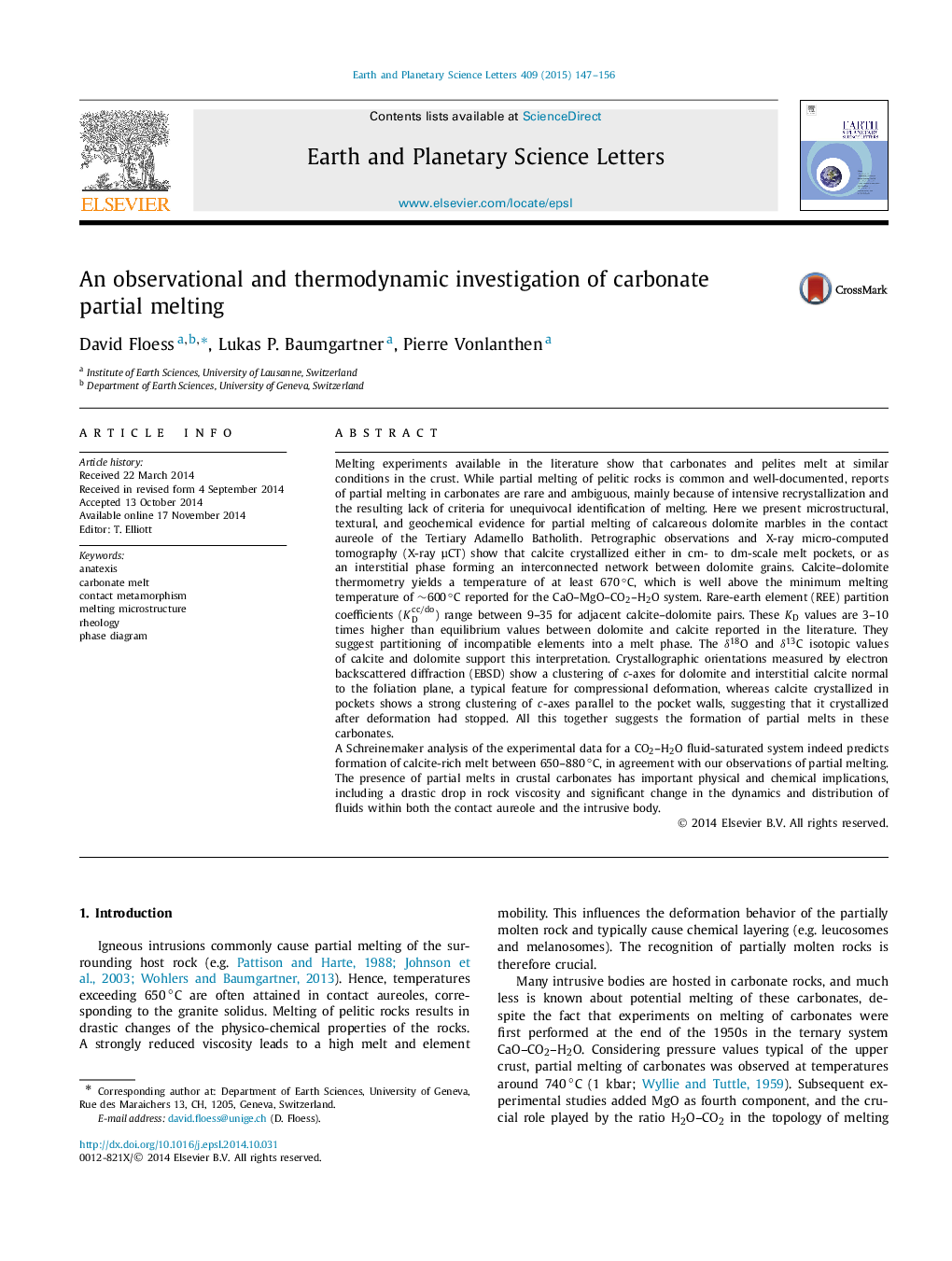| کد مقاله | کد نشریه | سال انتشار | مقاله انگلیسی | نسخه تمام متن |
|---|---|---|---|---|
| 6428828 | 1634747 | 2015 | 10 صفحه PDF | دانلود رایگان |
- We show well-preserved melting microstructures in calcite-bearing dolomites.
- Geochemical and textural data support a melting hypothesis.
- Calcite represent the former melt, dolomite the residual phase.
- Thermodynamic analysis suggests partial melting in upper crustal settings.
- Partially molten carbonates modify fluid flow and rheology around plutonic rocks.
Melting experiments available in the literature show that carbonates and pelites melt at similar conditions in the crust. While partial melting of pelitic rocks is common and well-documented, reports of partial melting in carbonates are rare and ambiguous, mainly because of intensive recrystallization and the resulting lack of criteria for unequivocal identification of melting. Here we present microstructural, textural, and geochemical evidence for partial melting of calcareous dolomite marbles in the contact aureole of the Tertiary Adamello Batholith. Petrographic observations and X-ray micro-computed tomography (X-ray μCT) show that calcite crystallized either in cm- to dm-scale melt pockets, or as an interstitial phase forming an interconnected network between dolomite grains. Calcite-dolomite thermometry yields a temperature of at least 670â°C, which is well above the minimum melting temperature of â¼600â°C reported for the CaO-MgO-CO2-H2O system. Rare-earth element (REE) partition coefficients (KDcc/do) range between 9-35 for adjacent calcite-dolomite pairs. These KD values are 3-10 times higher than equilibrium values between dolomite and calcite reported in the literature. They suggest partitioning of incompatible elements into a melt phase. The δ18O and δ13C isotopic values of calcite and dolomite support this interpretation. Crystallographic orientations measured by electron backscattered diffraction (EBSD) show a clustering of c-axes for dolomite and interstitial calcite normal to the foliation plane, a typical feature for compressional deformation, whereas calcite crystallized in pockets shows a strong clustering of c-axes parallel to the pocket walls, suggesting that it crystallized after deformation had stopped. All this together suggests the formation of partial melts in these carbonates.A Schreinemaker analysis of the experimental data for a CO2-H2O fluid-saturated system indeed predicts formation of calcite-rich melt between 650-880â°C, in agreement with our observations of partial melting. The presence of partial melts in crustal carbonates has important physical and chemical implications, including a drastic drop in rock viscosity and significant change in the dynamics and distribution of fluids within both the contact aureole and the intrusive body.
Journal: Earth and Planetary Science Letters - Volume 409, 1 January 2015, Pages 147-156
